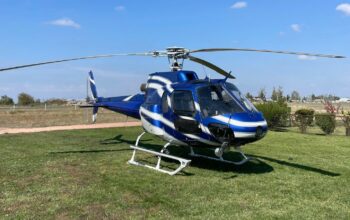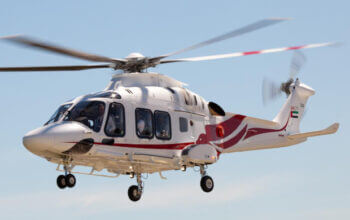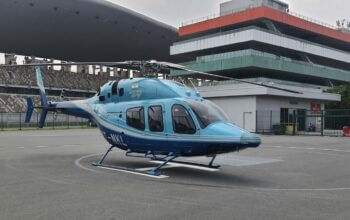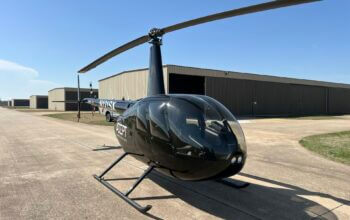Estimated reading time 13 minutes, 20 seconds.
Air Canada is using its regional aircraft to fly passengers in comfort and style on routes that were formerly only the domain of larger narrow-body jets.
Within aviation industry circles, Air Canada is considered an innovative airline of many firsts, including its pioneering Vancouver, B.C., to Seattle, Wash., flight in 1937 (when it was known as Trans-Canada Airlines); its automated reservations system; its non-smoking policy; and its fleet deployment strategy.
An innovative fleet deployment strategy, you ask? Really? Indeed. Few may know that Air Canada was one of the first airlines to give new meaning to the word regional, ordering 60 Brazilian-made regional aircraft back in 2004. It was a gutsy decision that would change the way Canadians viewed the often-unpleasant regional flight experience.
The tipping point of that decision came in September 2003, when Air Canada held an open house at its Dorval, Que., maintenance facility. VIPs, government officials, academics, super-elite Aeroplan frequent flyers, employees and journalists convened to kick the tires on Boeing, Bombardier, Airbus and Embraer airplanes parked side by side there, as Air Canada prepared to embark on a shopping spree to replace its aging McDonnell Douglas DC-9s. The venerable DC-9 workhorse was being put out to pasture, and new, more modern and efficient airplanes were needed. The suppliers were eager to show their wares, and Robert Milton, then chief executive officer of Air Canada, asked his most critical audience for their opinions. They spoke. He listened. And he bought Brazilian and Canadian, splitting the order between Embraer and Bombardier, but with two very different roles for Embraer E-Jets and Bombardier Canadair Regional Jets (CRJs).
Pushing the Limits
When the CRJ100 first hit the market, it was truly revolutionary. The 50-seat jet was a godsend to business travellers frustrated by the lack of same-day non-stops to markets that were just beyond turboprop range and couldn’t support high-frequency, large narrow-body flights. The adaptation of the Challenger CL-600 platform was ingenious and signalled a quantum leap in how airlines could build their networks and fortify their hubs. To customers, the CRJ was very welcome on short-haul routes: it eliminated the need for costly overnight stays due to flight schedules with limited frequencies and cumbersome connections (often by turboprops), and made it possible to be home in time for dinner or a bedtime story with the kids. Air Canada, specifically, reaped the benefits of flying CRJs on trans-border routes: partly from the strong component of high-fare business passengers and partly from the then premium US dollar revenue.
Yet, for all their time benefits, the small, first-generation regional jets, like the turboprops, had their limits. Adapting the Challenger business jet platform to airline passenger configuration carried with it many of the negatives associated with regional aircraft cramped cabins, low-set windows, limited carry-on baggage space, narrow seats, a small lavatory, single-class seating and minimal in-flight service.
All of this changed with Embraer claim of building a better mousetrap. After Air Canada executives flew to Embraer U.S. head office in Fort Lauderdale, Fla., to view a full-scale E-Jet cabin mock-up in the early days of the program, they knew a fleet of E-175s and E-190s would be game-changing airplanes.
What in a Name?
Embraer was so determined not to associate its new airplane concept with anything regional that it promptly changed the original ERJ170-200 and ERJ190-100 designations (ERJ for Embraer Regional Jet) after early feedback from prospective buyers indicated the airplanes were envisioned for more-traditional mainline flying. The manufacturer then jettisoned the letter R, dropped the rather technical naming convention and repositioned the four-aircraft family (170, 175, 190 and 195) as E-Jets.
Interestingly, the new CRJ705s that arrived from the 2004 order were assigned to Air Canada Jazz fleet, operating alongside Bombardier Dash 8s, but the E-175s and E-190s entered the mainline fleet. And, they entered just as the airline was re-inventing itself with TV and radio spots that featured Celine Dion belting out a song about why you and I were meant to fly (Air Canada, of course).
Behind the fanfare, the airline was quietly installing brand new seats, an audio and video-on-demand entertainment system, in-seat TV screens and power ports at every seat on its new E-175s and E-190s. The E-Jet fleet would showcase the new Air Canada; they were the first airplanes to be outfitted with the new interior look and on-board technology. They also showcased a dedicated executive-class cabin, generous overhead stowage, large lavatories, unobstructed under-seat space, big windows, full-service galleys, large cargo compartments, a two-metre (79-inch) floor to ceiling cabin height, a wide aisle, two-by-two seating and a more than 2,000-nautical-mile range (in long- and/or advanced-range versions). They were, as some passengers have called them, a scaled-down version of an Airbus A320, but without the dreaded middle seat; they weren’t, in the traditional sense, regional jets.
In it for the Longer Haul
The range, dual-class-seating configuration and entertainment system were fundamental to deploying the E-Jet fleet in Air Canada mainline network. After a period of proving runs, the airline schedulers started replacing longer short-haul and medium-haul A320 flights with E-190s and opening new nonstop routes. Almost overnight, the longer range E-190 was popping up on computer-reservations-system screens and Internet travel search engines, listing flights between Newark, N.J., and Calgary, Alta.; and between Toronto, Ont., and Seattle, Wash.; Portland, Ore.; Kelowna, B.C.; and Calgary and Edmonton, Alta.
In some cases, Air Canada E-190s were flying nearly five hours nonstop. About a dozen city pairs had E-190s flying at least four hours. These longer-haul routes had always been the domain of larger, single-aisle A320s and Boeing 737s. But, an E-190: could a regional aircraft really do the same flying?
When recently asked about her flying experience aboard the E-190, a flight attendant working Air Canada Flight 565 from San Francisco, Calif., to Vancouver, B.C., replied, I love this airplane for two reasons: passengers are less anxious when there are no middle seats, so they can sit longer, and the in-flight entertainment system is a great pacifier. We just plug em in to the movies or TV and they’re quiet for hours. Like surfing the Internet, time flies when you’re engrossed in a good film or your favourite TV show on board an airplane at 37,000 feet. With in-flight entertainment on-demand, the E-190 delivers the same on board experience found on Air Canada larger A320s, and even Boeing 767s flying long-haul routes.
Schedule, Schedule, Schedule
Ask any business traveller about his or her priority for selecting an airline and it usually comes down to schedule. The value of time has always been a driver for premium-fare fliers. Product consistency scores high, too; yet, for Canadians living in smaller cities served by regional jets or turboprops, consistency can be elusive when travelling internationally. An intercontinental business class trip often starts and ends with a connecting flight in a small, single-class regional aircraft. The E-175 and E-190, though, helped to introduce a more consistent product standard with their dedicated executive-class cabins. For the hefty ticket price associated with business class travel, a passenger could finally sit in a large seat for which he or she had paid, on every leg of the journey.
The range capability and E-Jet cabin attributes also allowed Air Canada to introduce non-stops in new markets and increase frequency in carefully added capacity increments in established markets. The first-ever Fort McMurray, Alta., to Toronto nonstop was initially served by a single daily E-190. Today, traffic on the city pair has grown enough to sustain two daily A319 flights.
Blurring the Line
To many, Embraer E-Jets will always be associated with traditional regional applications and short-haul flying, by virtue of their small capacity. But, Air Canada network planners have seen and continue to see them differently. The airplanes are still routinely scheduled in parallel with the airline larger narrow bodies. Between Calgary, Alta., and Montreal, Que.; St. John, Nfld.; and Toronto, Ont., and a host of other medium-haul routes, you’ll find a mix of A320 and E-190 departures that are staged to accommodate variations in time-of-day and day-of-week demand.
Other airlines around the world have also begun challenging the stigma associated with the word regional. For instance, JetBlue Airways in the United States introduced the E-190 to its low-cost carrier philosophy, becoming the first airline to operate a mixed fleet concept in that business model. United Airlines’ regional United Express service offers first class, economy plus and economy class seating on its fleet of 70-seat E-170s to maintain product consistency with the parent mainline jets. On the other side of the world, Virgin Australia is flying its E-190s four hours and 40 minutes over water from Perth to the Keeling (Cocos) Islands, southwest of Jakarta, Indonesia. And British Airways BA CityFlyer deploys both the E-170 and E-190 from London City Airport, arguably the most coveted, high-fare airport in Europe.
Of course, no matter who else follows, it was Air Canada that first blurred the line between the traditional missions of small-capacity regional jets and the larger Boeing and Airbus narrow bodies, demonstrating foresight and vision that took years for other airlines to copy. So, the credit for redefining regional aviation goes to Air Canada.
Daniel Bachmann passion for aviation surfaced while flying over the Amazon jungle in a missionary float plane throughout his childhood. His career waypoints in business development, marketing and communications in several market sectors led him back to aviation, supporting the launch and growth of Embraer executive jets division over the last decade. Today, he serves a variety of global customers within the aviation market.
Notice a spelling mistake or typo?
Click on the button below to send an email to our team and we will get to it as soon as possible.
Report an error or typoHave a story idea you would like to suggest?
Click on the button below to send an email to our team and we will get to it as soon as possible.
Suggest a story












